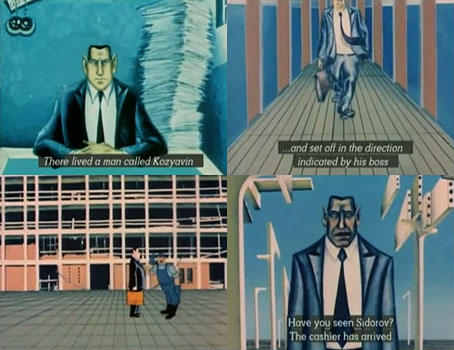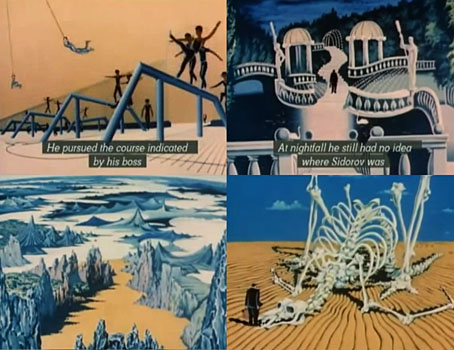The aesthetics of Surrealism are largely absent in the art of Soviet Russia but they can be found in some of the early animated films of Andrei Khrzhanovsky. One of these, The Glass Harmonica (1968), shows the influence of Magritte and De Chirico, among others, and is also distinguished by being the only animation to be officially banned by the Soviet authorities. The film is rather confused but its message about the liberating power of art and music was clear enough to pose an ideological threat.
More straightforward is There Lived Kozyavin (1966), a shorter film with a jazzy score about a bureaucrat mindlessly following his supervisor’s order to an extreme degree. As with The Glass Harmonica, the film borrows the limitless plains and unusual landscapes of Surrealism for its setting. The message may be the same as those posters exhorting Soviet citizens to be better workers but it does so in a more entertaining manner.


